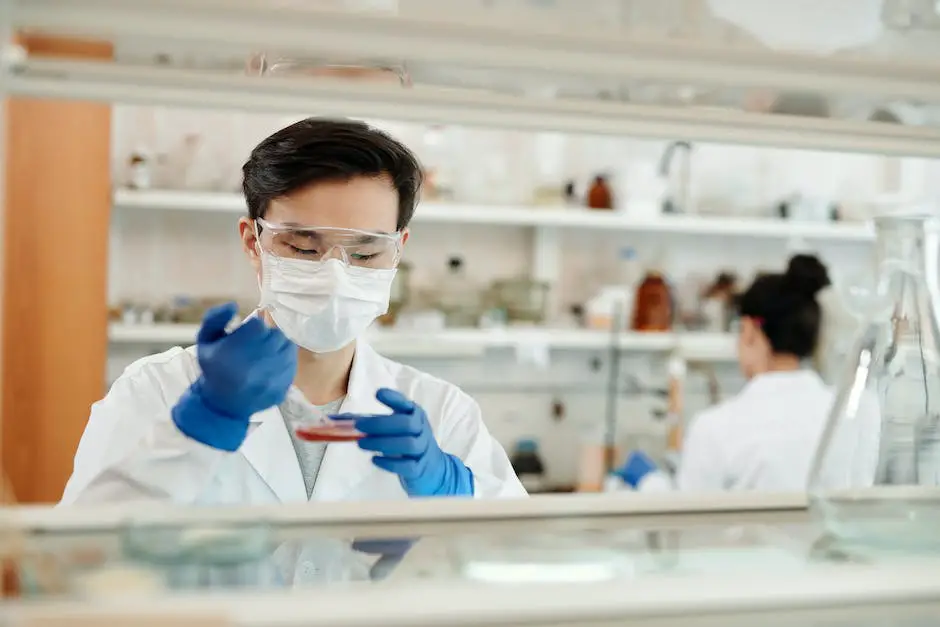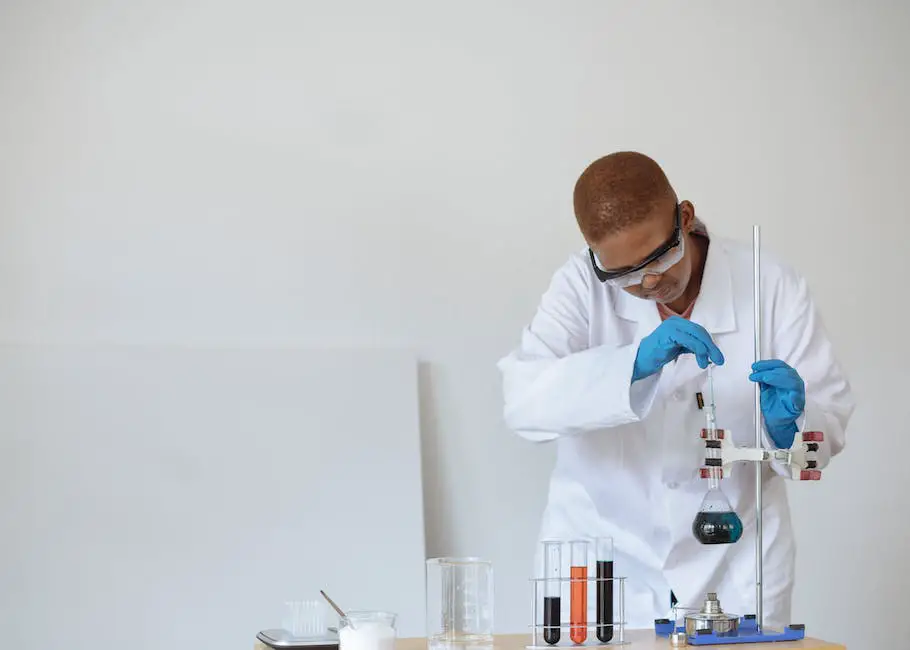I have come across this term, regenerative medicine, in my search for information on how we can do something about our health without resorting to highly invasive approaches. I describe this new term based on available literature I found online with the aid of artificial intelligence that cuts across our life nowadays.
Here’s what I’ve found, curated and edited to the best of my ability as a writer for many years. It’s great to be familiar with this new approach and apply it to myself. I hope you find this information useful, too.
I highlighted the important phrases and pull-quoted some statements which I believe can help the reader understand clearly the concept. Whenever possible, I searched and included significant empirical findings as reference to claims that require scientific backing.
I also included useful links (AI can’t do that at this time) to high quality sources that further enhance your learning experience as one of the readers of this unique article – a blend of human creativity and technology at the same time.
Just brace yourself for the new terms or medical jargon that come your way. Don’t worry, I found easy to understand definitions and linked to them and occasionally added supplementary, laymanized definitions next to the term for easy understanding.
Let’s go.
Table of Contents
Foreword
As the environment becomes much more challenging, many illnesses and diseases arise that hound the ever-increasing world population. Technological advancement keeps up and makes possible life beyond the anticipated life expectancy of the past generation. Among these new approaches include the futuristic approach of regenerative medicine which I describe here.
The dawning era of regenerative medicine holds promising potential for revolutionizing traditional approaches to healing and disease management. As a field, it strides beyond mere disease treatment, aiming to restore or establish normal function by repairing or replacing damaged cells, tissues, and organs.
Regenerative medicine is a multi-faceted approach that has the profound capability of tackling diseases that are currently beyond the reach of traditional medicine, rekindling hope for many patients and their families. Undeniably, the scientific principles underpinning regenerative medicine such as stem cell research, gene therapy, tissue engineering, and nanotechnology, are complex yet fundamentally groundbreaking.
This article attempts to demystify these concepts and delve into the numerous successes, ongoing challenges, and exciting future prospects of regenerative medicine.
Introduction to Regenerative Medicine
Regenerative Medicine Defined
Regenerative medicine is a groundbreaking field of medical science that aspires to repair, replace, or regrow human cells, tissues, or organs. It aims to restore or establish normal function where it has been compromised due to disease, trauma, or congenital issues.
Regenerative medicine is a field of medical science that aspires to repair, replace, or regrow human cells, tissues, or organs. It aims to restore or establish normal function where it has been compromised due to disease, trauma, or congenital issues.
AI-generated definition
This high-potential branch of medicine is rapidly becoming a game-changer in the way we understand and treat illness. In contrast to traditional medicine that primarily treats symptoms, regenerative medicine’s primary goal is to address the root cause, thereby providing comprehensive healing and prevention against future recurrence of the issue.
Basic Principles of Regenerative Medicine
The basic principles of regenerative medicine incorporate a variety of scientific disciplines including molecular biology, immunology, genomics, stem cell research, and nanotechnology, among others. The key principles focus on stimulating the body’s own repair mechanisms to functionally heal previously irreparable tissues or organs.
Regenerative medicine relies predominantly on three types of interventions: rejuvenation, which boosts the body’s natural ability to heal itself; replacement, where damaged organs or tissues are replaced with healthy ones; and regeneration, featuring techniques that prompt the body to grow cells, tissues, or organs.
Differences Between Traditional Medicine and Regenerative Medicine
Traditional medicine usually focuses on managing symptoms of diseases or conditions and mitigating their impact through the use of synthetic drugs or invasive procedures. On the other hand, regenerative medicine aims to rectify the root cause of the disease by restoring the function of the damaged cells, tissues, or organs.
This distinguishing trait makes regenerative medicine a promising solution to a multitude of diseases that were previously considered incurable or life-threatening, and offers a hope for patients who are not responding to traditional therapies.
Brief History of Regenerative Medicine and its Evolution
Regenerative medicine’s roots can be tracked back to ancient times, yet it began to take its current form in the 20th century with advancements in cell, molecular, and tissue engineering biology. The first significant milestone was the discovery of stem cells in the 1960s. In the early 2000s, scientists started to create functional tissues in laboratories that offered potential for organ replacement, thereby setting the field of regenerative medicine on a new course.
Since then, the field has continuously evolved, introducing revolutionary therapies and procedures in burn treatments, bone marrow transplants, and cartilage regeneration, among many others. Development of new technologies like 3D bio-printing have further promised significant leaps in regenerative medicine in the near future.
Exploring the Potential of Regenerative Medicine
Regenerative medicine holds a promise that’s yet to be entirely fulfilled. This progressive branch of medical science offers potential remedies for numerous devastating diseases and conditions that are currently managed by merely relieving symptoms, rather than effecting a cure.
Illnesses such as Alzheimer’s, Parkinson’s, heart disease, diabetes, and spinal cord injuries may witness remarkable advancements in their treatments or even complete eradication courtesy of regenerative medicine. Through harnessing our body’s innate healing ability, regenerative medicine is poised to revamp treatment approaches and patient experiences, thereby catalyzing a monumental leap in human health and wellness.

The Science Behind Regenerative Medicine
The Role of Stem Cells in Regenerative Medicine
The cornerstone of regenerative medicine is the versatile stem cell, famed for its unique ability to both self-replicate and morph into specialized cells – such as muscle, skin, or nerve cells. This versatility is pivotal in the development or regeneration of tissues and organs.
There are two primary types of stem cells – embryonic stem cells (ESCs) and adult stem cells, each with their specific advantages and constraints. ESCs are more flexible but are more challenging to regulate and raise ethical concerns. Adult stem cells, conversely, present fewer ethical quandaries, but lack the adaptability of ESCs.
However, the advent of induced pluripotent stem cells, this entails reprogramming adult cells to behave like ESCs, offers a viable solution to these challenges.
Gene Therapy as a Tool in Regenerative Medicine
Gene therapy seeks to treat or prevent disease by modifying or replacing the genes within an individual’s cells. This is particularly relevant in regenerative medicine, given that many diseases and conditions are linked to genetic abnormalities.
Gene editing technologies like CRISPR/Cas9 have opened new doors in this field. This technology can “cut” specific sequences in the DNA, allowing for the insertion, deletion, or replacement of genes. This approach is potentially transformative for a variety of genetic conditions and could aid in the creation of genetically tailored tissues or organs for transplantation.
Tissue Engineering in Regenerative Medicine
Tissue engineering is another crucial concept in the field of regenerative medicine. It involves creating “scaffolds” – structures made from a variety of materials, including proteins, polymers, or biological molecules – that cells can attach to and grow upon. These scaffolds can either originate from the patient’s own tissue or be lab-grown. They provide the crucial structural and biochemical support that cells need to mature and organize themselves into functional tissue.
Furthermore, bioactive substances such as growth factors can be incorporated into these scaffolds to further stimulate cell growth and differentiation. This type of regenerative medicine has already been implemented in creating skin grafts for burn victims, custom bone implants, and even simple organs like bladders.
Nanotechnology and its Role in Regenerative Medicine
Nanotechnology is also gaining traction in regenerative medicine. This science relies on the manipulation of materials at an atomic or molecular scale – typically under 100 nanometers (a billionth of a meter). Nanomaterials can be used in tissue engineering to create smarter, more functional scaffolds. They can serve as carriers for growth factors, drugs, or even genes – providing controlled, localized delivery.
Additionally, nanoparticles themselves can mimic cues in the natural cell environment, influencing cell behavior and tissue formation. The immense flexibility and potential of nanotechnology make it an exciting area of research within the field of regenerative medicine.
Unlocking the Potential of Regenerative Medicine
In the world of science and medicine, researchers and practitioners are keenly tapping into regenerative techniques with hopes of restoring and rejuvenating damaged or degenerating tissues and organs. This represents the very heart of regenerative medicine’s potential, promising advancements that could revolutionize our current understanding of bodily healing.

Applications & Success Stories of Regenerative Medicine
The Role of Regenerative Medicine in Orthopedics
The field of orthopedics has been one of the early adopters of regenerative medicine, seeing substantial benefits from its applications. From athletes to individuals grappling with chronic pain, many have enjoyed marked improvement through treatments like Platelet-Rich Plasma (PRP) and Stem Cell Therapy.
High-profile athletes like basketball great Kobe Bryant and baseball legend Alex Rodriguez are reported to have undergone PRP therapy to expedite injury recovery, highlighting its effectiveness. Similarly, leading institutions like the Mayo Clinic are pioneering the use of stem cell therapy for addressing challenging orthopedic conditions such as avascular necrosis of the femoral head.
Heart Diseases and Regenerative Medicine
Heart diseases are among the leading causes of mortality worldwide. Regenerative medicine shows promise in this area, specifically through stem cell-based therapies.
At the Cedars-Sinai Heart Institute, a man once diagnosed with a severe heart condition was successfully treated with stem cell injections, showing significant improvement in his heart function. This highlights the immense potential of regenerative medicine in treating heart ailments, ranging from cardiomyopathy (diseases of the heart muscle) to heart attacks.
Regenerative Medicine and Skin Wound Healing
The potential of regenerative medicine extends to wound healing and management as well.
A 2018 study published in Stem Cells Translational Medicine reported that a woman suffering from radiation burns showed considerable improvement after receiving stem cell therapy. Her treatment involved injections of adipose (fat)-derived stem cells into the affected areas, which stimulated tissue regeneration and healed the burns.
Eye Diseases Treatment via Regenerative Medicine
Regenerative medicine has made significant strides in treating eye diseases too.
In 2018, a woman in her sixties with age-related macular degeneration – a leading cause of vision loss – had her sight restored following a stem cell-based therapy. Surgeons at Moorfields Eye Hospital in London transplanted a patch of stem cell-derived retinal cells into her eye, thus reversing the vision loss.
Regenerative Medicine in Oncology Trials
While still in the experimental stages, regenerative medicine also holds promise in cancer treatment. Scientists at the Mayo Clinic are using the body’s defense mechanism – specifically, white blood cells – in a new and promising method to kill cancer. They have engineered these cells into CAR-T cells, which identify and destroy cancer cells, highlighting a new potential weapon in combating the deadly disease.
Organ Transplants and Regenerative Medicine
Organ transplantation is another domain where regenerative medicine can be transformational.
In Japan, a little girl suffering from a rare congenital bile duct disorder received a lifesaving liver transplant. The donated organ was first reduced to a cellular structure at the lab, then repopulated with the girl’s cells, and eventually transplanted into her body, marking a significant milestone in regenerative medicine.
Regenerative Medicine in Dentistry
Dental professionals use regenerative techniques to restore gums and bone lost to periodontal diseases. Techniques like guided tissue regeneration (GTR) and guided bone regeneration (GBR) use barrier membranes to stimulate the body’s natural potential to regenerate lost bone and gum tissue in the mouth. Clinical case reports highlight successful restorations of large oral defects caused by aggressive periodontitis or after cyst removal.
It is clear that regenerative medicine is showcasing impressive potential within a multitude of fields. Although this discipline is in the early stages, it is revolutionizing our method of addressing and treating numerous health issues. This gives hope for better patient care and improved healthcare outcomes.

Challenges & Ethical Considerations
Technical Hurdles
Despite such promising potential, there exist significant hurdles preventing the broader implementation of regenerative medicine. These obstacles primarily derive from the intricate nature of human biology and the associated difficulty in accurately replicating it within a laboratory setting.
A key challenge lies in fabricating tissues that can perfectly integrate with the patient’s existing tissue, which necessitates a profound comprehension of tissue microenvironment and essential signals for cell proliferation and differentiation.
Additional technical hurdles comprise of establishing a stable source of stem cells and robust production systems, constructing medical devices compatible with regenerative medicine strategies, and assuring the large-scale production of these therapies while maintaining their efficiency and safety.
Funding and Regulatory Challenges
The development and implementation of regenerative medicine also face significant financial hurdles. Regenerative therapies typically require a high upfront investment and lengthy development period, which makes it difficult to attract the necessary funding. Additionally, the regulatory landscape for regenerative medicine is complex and evolving, which can create uncertainties that further hinder investment and progress.
Regulatory challenges also arise from the need to ensure patient safety. Regenerative medicine therapies often involve altering the patient’s cells in some way, and regulatory bodies like the Food and Drug Administration (FDA) must ensure that these alterations do not lead to adverse effects down the road.
Ethical Considerations
Regenerative medicine, like all areas of healthcare, raises ethical considerations that must be addressed. One significant issue is medical tourism related to regenerative treatments. When cures are not readily available in one country, patients might travel to another country where the treatment is available, potentially putting themselves at risk due to lesser regulatory standards or oversight.
Issues of access and equity are also central to the ethical discussion surrounding regenerative medicine. With the high costs associated with these therapies, there are concerns regarding the potential for unequal access to treatments based on socioeconomic status.
Beyond this, the implications of genetic modifications raise further ethical questions. While gene-editing techniques such as CRISPR hold the potential to cure genetic diseases, they also carry the risk of unintended consequences. These techniques must therefore be used with caution, and ethical lines need to be clearly drawn.
Conclusion
From the above, it is clear that while regenerative medicine offers transformative solutions, its potential is yet to be fully realized due to several complexities. These range from technical challenges and funding issues to regulatory and ethical complexities.
However, with persistent research, open dialogue, and systematic policy development, these complexities can be tackled. That will eventually clear the path for a more widespread implementation and acceptance of regenerative medicine.

The Future of Regenerative Medicine
The Scope of Current Research in Regenerative Medicine
Regenerative medicine, as a rapidly advancing and exciting field, aims to repair or even replace damaged tissues and organs within the human body. The research landscape in this area is expansive, containing a diverse range of techniques and methodologies – such as stem cell therapy, utilization of biomaterials, tissue engineering, and the recent incorporation of artificial intelligence in the field.
At the heart of regenerative medicine lies stem cell research. Scientists and researchers are fervently exploring the capabilities of various types of stem cells – including embryonic stem cells, induced pluripotent stem cells and adult stem cells – and their ability to heal and regenerate. With their ability to transform into a multitude of cell types, stem cells could potentially revolutionize the treatment of a variety of degenerative diseases, injuries, and other medical conditions in the future.
Biomaterials alongside tissue engineering further bolster the scope of regenerative medicine by offering a physical framework to facilitate cell growth and tissue formation. Researchers across the globe are experimenting with new-age biomaterial scaffolds and matrices that could host stem cells or other cell types, thereby promoting their growth into functional tissues. This specific approach may prove instrumental in shaping future organ regeneration and transplant procedures.
Additionally, the use of gene editing methodologies, notably CRISPR-Cas9, forms another critical component of ongoing research in regenerative medicine. By modifying cells at the genetic level accurately, the technique opens avenues to correct genetic disorders, enhance cellular regenerative abilities, or guide their transition into specific cell types.
The Role of Artificial Intelligence
Artificial intelligence is increasingly being implemented in regenerative medicine research. AI can process vast amounts of data quickly and accurately, making it valuable in analyzing complex biological systems. Machine learning algorithms can predict cell behaviors, model different stages of cell differentiation, and even design new biomaterials or drugs for regenerative therapies.
AI is also being used to accelerate the discovery and development of new regenerative therapies. High-throughput screening, powered by AI, can evaluate thousands of potential drug candidates quickly, significantly accelerating the traditional drug development process.
Future Applications and Impacts
The potential of regenerative medicine is vast. We could see this field revolutionizing healthcare in numerous ways – from curing formerly incurable diseases to reducing dependency on organ transplants. Diabetes, heart disease, spinal cord injuries, and various neurodegenerative disorders are just a few examples of conditions that regenerative therapies might dramatically impact.
Regenerative medicine could also significantly extend healthy human lifespan. By repairing or renewing aging tissues, it might be possible to mitigate many age-related diseases and conditions, contributing to increased life expectancy.
The societal implications of potentially curing diseases and increasing life expectancy are extraordinary. Increased productivity, reduced healthcare costs, and enhanced quality of life are among the many potential benefits. However, with these developments come ethical considerations that society must be prepared to address.
In the future, we may also see regenerative medicine moving beyond restoring health to enhancing human capabilities. Examples could include improved cognitive functions, increased physical stamina, or even augmented senses. This aspect of regenerative medicine, often referred to as transhumanism, has its own set of societal and ethical implications that will need to be carefully considered.

As the twilight of traditional medicine approaches and the dawn of regenerative medicine emerges, continuous driving force is required to overcome the existing hurdles. While these challenges do exist, they are not insurmountable and can serve as catalysts to foster innovation and advancements. Ethical considerations equally demand our thoughtful attention, warranting an ongoing, open dialogue to ensure equitable access and transparent practices.
Looking forward, regenerative medicine’s potential is captivating. With its enchanting dance alongside artificial intelligence and other cutting-edge fields, its impact on our society and healthcare landscape is projected to be vast and transformative. Unparalleled scientific milestones await us on the horizon, infusing optimism for a healthier and brighter future for us all.


